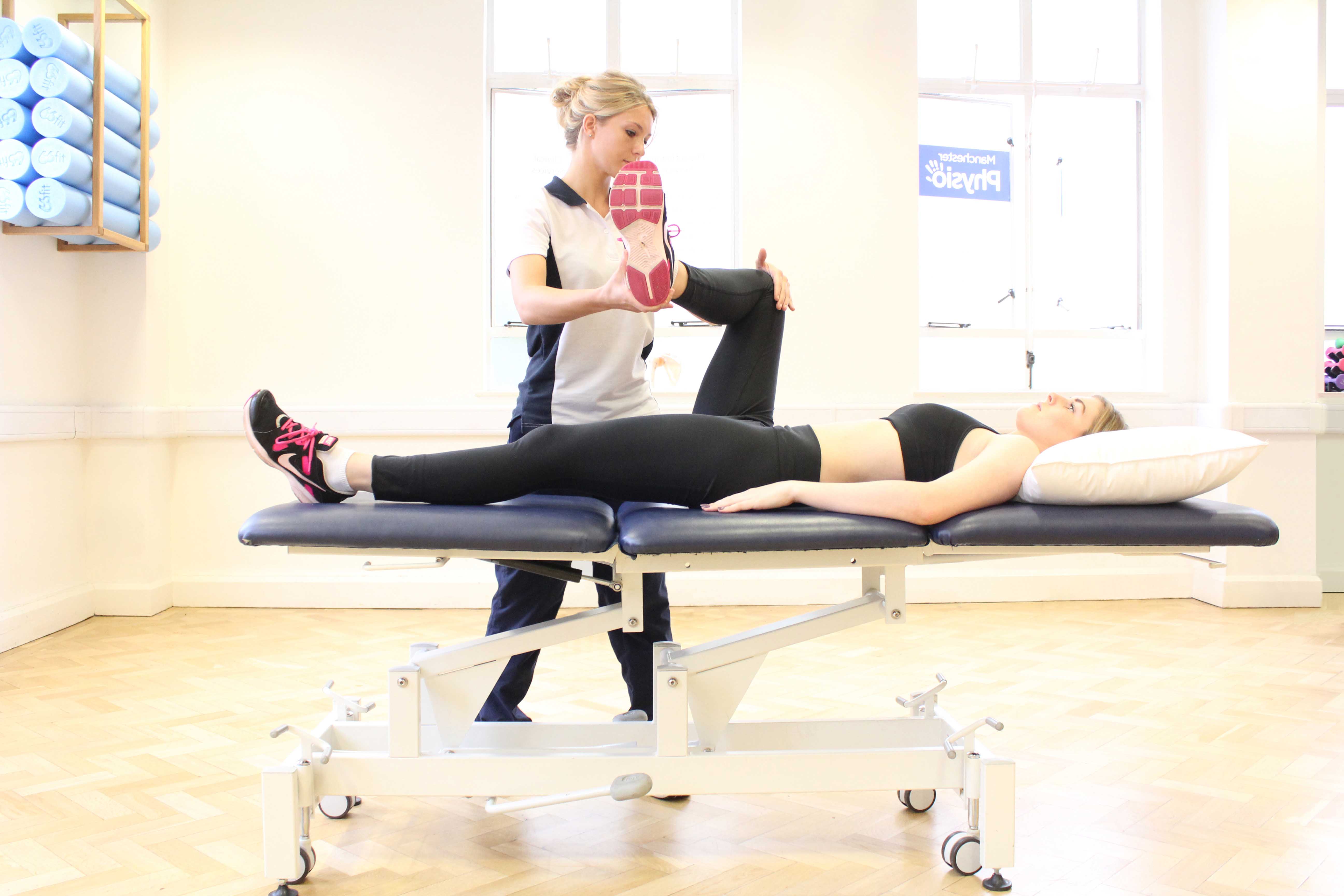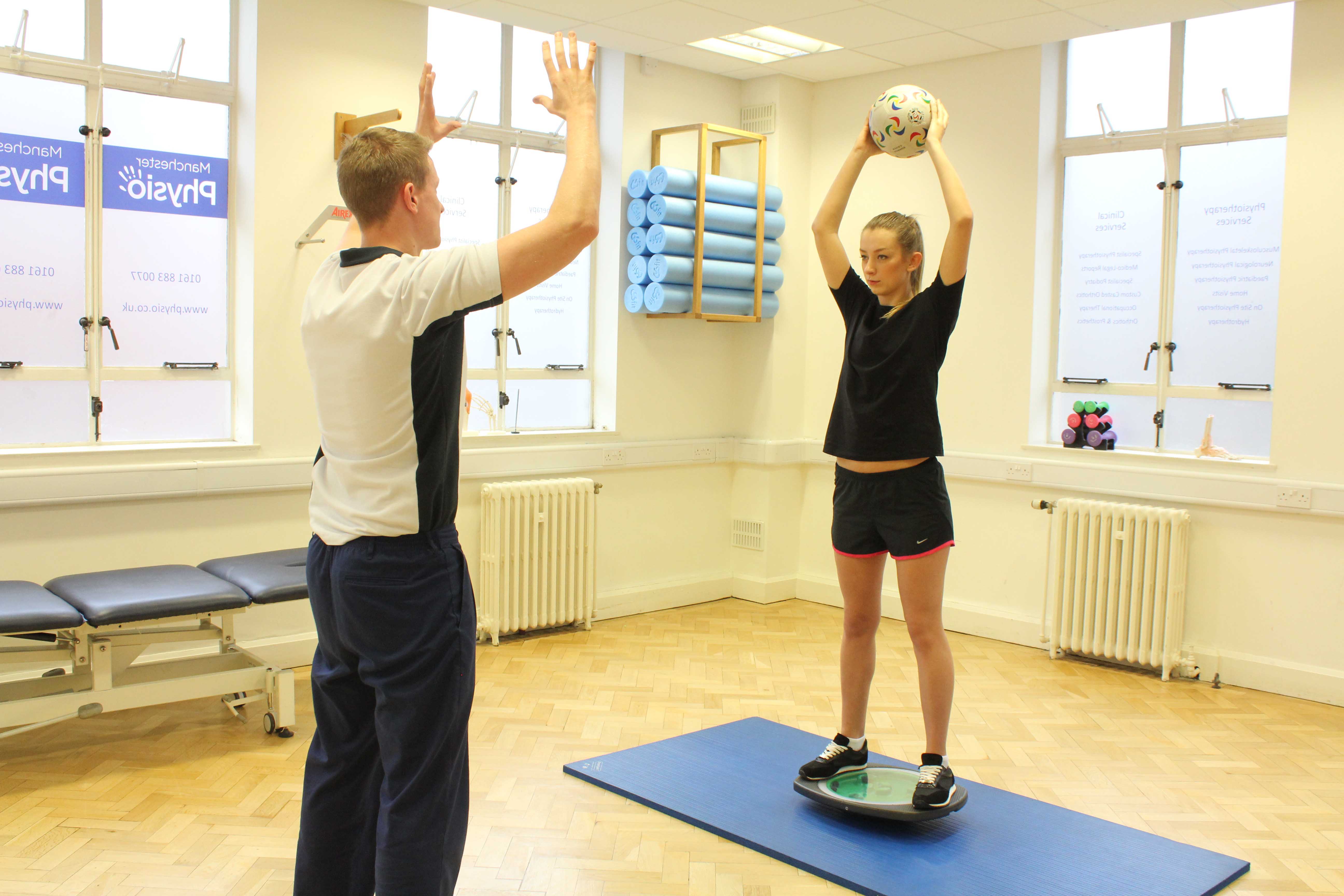What is Pellegrini-Stieda syndrome?
The medial collateral ligament of the knee runs down the inner aspect of the knee from the thigh bone (femur) to the shin bone (tibia). Pellegrini-Stieda syndrome refers to an injury to and calcification (hardening of tissue due to calcium build up) of the medial collateral ligament where it attaches to the thigh bone. Physiotherapy is an effective way to treat pellegrini-stieda syndrome.
How does Pellegrini-Stieda syndrome happen?
Pellegrini-Stieda syndrome can occur after an injury to the medial collateral ligament at the site where it attaches to the thigh bone. A medial collateral ligament injury can occur if the knee is caused to bend inwards, overstretching and injuring the medial collateral ligament. This commonly occurs from a blow to the outside of the knee whilst the foot is planted on the ground.
 Above: Therapist performing knee assessment
Above: Therapist performing knee assessmentWhat are the symptoms of Pellegrini-Stieda syndrome?
Pellegrini-Stieda syndrome causes a restriction in the amount of movement within the knee. Straightening of the knee is usually most affected and twisting of the knee may also be limited. There may also be a small tender lump on the inside of the knee. Other symptoms may include:
What should I do if I have Pellegrini-Stieda syndrome?
If you have or suspect you have Pellegrini-Stieda syndrome, you should arrange a physiotherapy assessment as soon as possible. In the meantime you can begin icing the inside of your knee with a bag of frozen peas or crushed ice wrapped in a damp cloth for 15–20 minutes every 1–2 hours.
What shouldn’t I do if I have Pellegrini-Stieda syndrome?
If you have or suspect you have Pellegrini-Stieda syndrome you should not ignore your problem. Ignoring the problem may lead to your injury getting worse and prolong your recovery.
 Above: Knee stability exercises conducted by experienced physiotherapist
Above: Knee stability exercises conducted by experienced physiotherapistPhysiotherapy treatment for Pellegrini-Stieda syndrome.
Physiotherapy is very important in the treatment of Pellegrini-Stieda syndrome. At the initial assessment your physiotherapist will be able to provide you with a diagnosis and determine an appropriate treatment plan. Treatment may involve:
Could there be any long-term effects from Pellegrini-Stieda syndrome?
If correctly diagnosed and treated, Pellegrini-Stieda syndrome usually gets better in a few weeks with no long-term consequences. In some more persistent cases, you may be referred for an anti-inflammatory injection.
Please call Physio.co.uk on 0330 088 7800 or book online to make an appointment.

 0330 088 7800
0330 088 7800

































